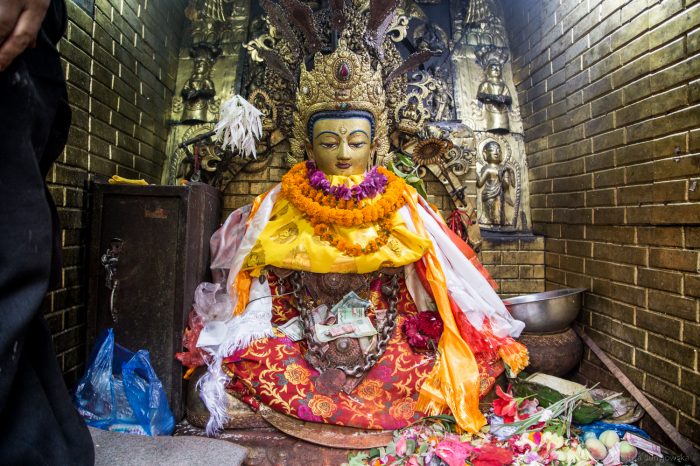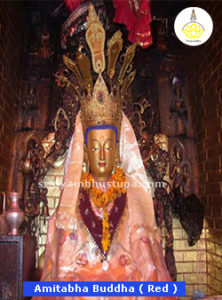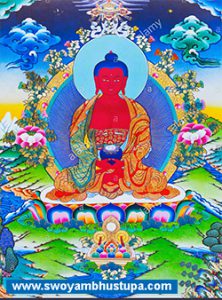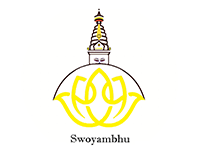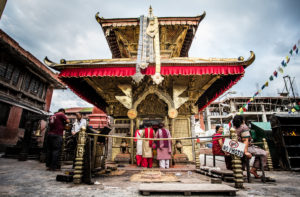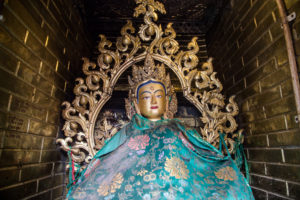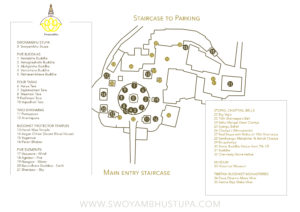Amitabha Buddha

Vajrayana introduced the theory of the five Dhyani Buddhas as embodiments of the five cosmic elements– ether, water, earth, fire and air and formulated the theory of the family of the five Dhyani Buddhas from which deities emanate according to need. The cult of the Dhyani Buddhas, who are assigned definite positions in the cosmogony of the stupa is quite popular in Nepal and may have been introduced from India as early as the 7th century A.D. The immense popularity of this cult can easily be seen and the hundreds of votive chaityas in and around the Valley. Of the five Dhyani Buddhas the senior, in Nepali hierarchy, is Vairochana (ether) who occupies the center of a Mandala but is not represented in the roadside votives which depict only the other four Dhyani Buddhas, Akshobhya (water) of the East, Ratna-Sambhava (earth) of the South, Amitabha (fire) of the West and Amoghsiddhi of the North. In the Swayambhu stupa, Vairochana is placed between Akshobhya and Ratna-Sambhava.
1. Amitabha Buddha
Amitabha Buddha is red in colour. Amitabha Buddha is represented in the stupa facing to the west. Amitabha Buddha rides on peacock symbolizing that he can take away the suffering of others just as the peacock eats poisonous plants and yet his tail shines forth. Amitabha Buddha resides in the western land of unlimited bliss (Sukhavati). Amitabha Buddha is assisted by two bodhisattvas viz. Avalokiteshvara and Mahasthamprapta.
Amitabha Buddha always exhibits Dhyana Mudra. Amitabha Buddha belongs to the Lotus family. Amitabha Buddha originates from the seed syllable hrīḥ. The female consort of Amitabha Buddha is Pandura, who is gifted with the sense of taste through Tongue. She is the fourth of the Tara family.
